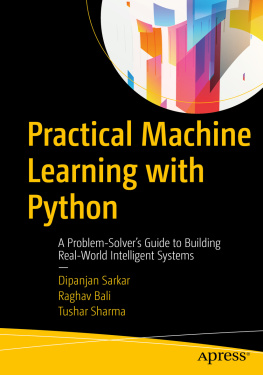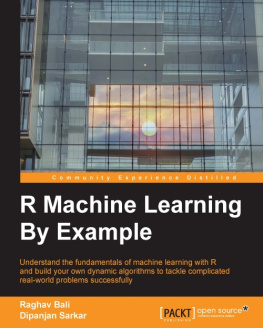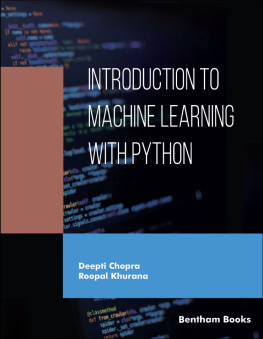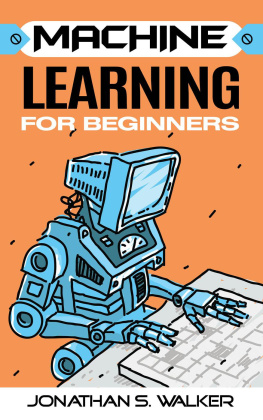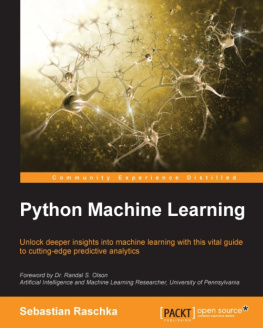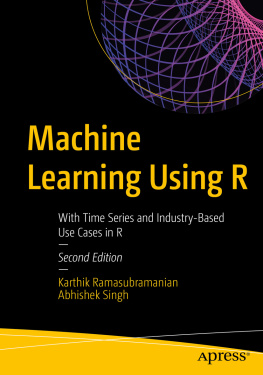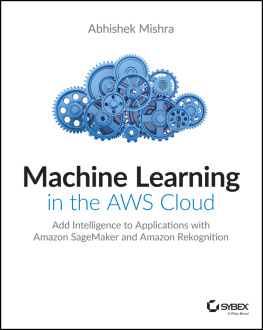1. Machine Learning Basics
The idea of making intelligent, sentient, and self-aware machines is not something that suddenly came into existence in the last few years. In fact a lot of lore from Greek mythology talks about intelligent machines and inventions having self-awareness and intelligence of their own. The origins and the evolution of the computer have been really revolutionary over a period of several centuries, starting from the basic Abacus and its descendant the slide rule in the 17th Century to the first general purpose computer designed by Charles Babbage in the 1800s. In fact, once computers started evolving with the invention of the Analytical Engine by Babbage and the first computer program, which was written by Ada Lovelace in 1842, people started wondering and contemplating that could there be a time when computers or machines truly become intelligent and start thinking for themselves. In fact, the renowned computer scientist, Alan Turing, was highly influential in the development of theoretical computer science, algorithms, and formal language and addressed concepts like artificial intelligence and Machine Learning as early as the 1950s. This brief insight into the evolution of making machines learn is just to give you an idea of something that has been out there since centuries but has recently started gaining a lot of attention and focus.
With faster computers, better processing, better computation power, and more storage, we have been living in what I like to call, the age of information or the age of data. Day in and day out, we deal with managing Big Data and building intelligent systems by using concepts and methodologies from Data Science , Artificial Intelligence , Data Mining , and Machine Learning . Of course, most of you must have heard many of the terms I just mentioned and come across sayings like data is the new oil . The main challenge that businesses and organizations have embarked on in the last decade is to use approaches to try to make sense of all the data that they have and use valuable information and insights from it in order to make better decisions. Indeed with great advancements in technology, including availability of cheap and massive computing, hardware (including GPUs) and storage, we have seen a thriving ecosystem built around domains like Artificial Intelligence, Machine Learning, and most recently Deep Learning. Researchers, developers, data scientists, and engineers are working continuously round the clock to research and build tools, frameworks, algorithms, techniques, and methodologies to build intelligent models and systems that can predict events, automate tasks, perform complex analyses, detect anomalies, self-heal failures, and even understand and respond to human inputs.
This chapter follows a structured approach to cover various concepts, methodologies, and ideas associated with Machine Learning. The core idea is to give you enough background on why we need Machine Learning, the fundamental building blocks of Machine Learning, and what Machine Learning offers us presently. This will enable you to learn about how best you can leverage Machine Learning to get the maximum from your data. Since this is a book on practical Machine Learning, while we will be focused on specific use cases, problems, and real-world case studies in subsequent chapters, it is extremely important to understand formal definitions, concepts, and foundations with regard to learning algorithms, data management, model building, evaluation, and deployment. Hence, we cover all these aspects, including industry standards related to data mining and Machine Learning workflows, so that it gives you a foundational framework that can be applied to approach and tackle any of the real-world problems we solve in subsequent chapters. Besides this, we also cover the different inter-disciplinary fields associated with Machine Learning, which are in fact related fields all under the umbrella of artificial intelligence.
This book is more focused on applied or practical Machine Learning, hence the major focus in most of the chapters will be the application of Machine Learning techniques and algorithms to solve real-world problems. Hence some level of proficiency in basic mathematics, statistics, and Machine Learning would be beneficial. However since this book takes into account the varying levels of expertise for various readers, this foundational chapter along with other chapters in Part I and II will get you up to speed on the key aspects of Machine Learning and building Machine Learning pipelines. If you are already familiar with the basic concepts relevant to Machine Learning and its significance, you can quickly skim through this chapter and head over to Chapter , The Python Machine Learning Ecosystem, where we discuss the benefits of Python for building Machine Learning systems and the major tools and frameworks typically used to solve Machine Learning problems.
This book heavily emphasizes learning by doing with a lot of code snippets, examples, and multiple case studies. We leverage Python 3 and depict all our examples with relevant code files ( .py ) and jupyter notebooks ( .ipynb ) for a more interactive experience. We encourage you to refer to the GitHub repository for this book at https://github.com/dipanjanS/practical-machine-learning-with-python , where we will be sharing necessary code and datasets pertaining to each chapter. You can leverage this repository to try all the examples by yourself as you go through the book and adopt them in solving your own real-world problems. Bonus content relevant to Machine Learning and Deep Learning will also be shared in the future, so keep watching that space!
The Need for Machine Learning
Human beings are perhaps the most advanced and intelligent lifeform on this planet at the moment. We can think, reason, build, evaluate, and solve complex problems. The human brain is still something we ourselves havent figured out completely and hence artificial intelligence is still something thats not surpassed human intelligence in several aspects. Thus you might get a pressing question in mind as to why do we really need Machine Learning? What is the need to go out of our way to spend time and effort to make machines learn and be intelligent? The answer can be summed up in a simple sentence, To make data-driven decisions at scale. We will dive into details to explain this sentence in the following sections.
Making Data-Driven Decisions
Getting key information or insights from data is the key reason businesses and organizations invest heavily in a good workforce as well as newer paradigms and domains like Machine Learning and artificial intelligence. The idea of data-driven decisions is not new. Fields like operations research, statistics, and management information systems have existed for decades and attempt to bring efficiency to any business or organization by using data and analytics to make data-driven decisions. The art and science of leveraging your data to get actionable insights and make better decisions is known as making data-driven decisions. Of course, this is easier said than done because rarely can we directly use raw data to make any insightful decisions. Another important aspect of this problem is that often we use the power of reasoning or intuition to try to make decisions based on what we have learned over a period of time and on the job. Our brain is an extremely powerful device that helps us do so. Consider problems like understanding what your fellow colleagues or friends are speaking, recognizing people in images, deciding whether to approve or reject a business transaction, and so on. While we can solve these problems almost involuntary, can you explain someone the process of how you solved each of these problems? Maybe to some extent, but after a while, it would be like, Hey! My brain did most of the thinking for me! This is exactly why it is difficult to make machines learn to solve these problems like regular computational programs like computing loan interest or tax rebates. Solutions to problems that cannot be programmed inherently need a different approach where we use the data itself to drive decisions instead of using programmable logic, rules, or code to make these decisions. We discuss this further in future sections.

